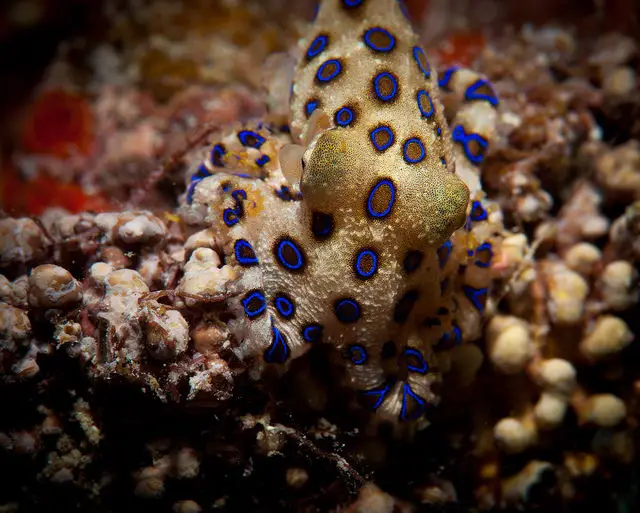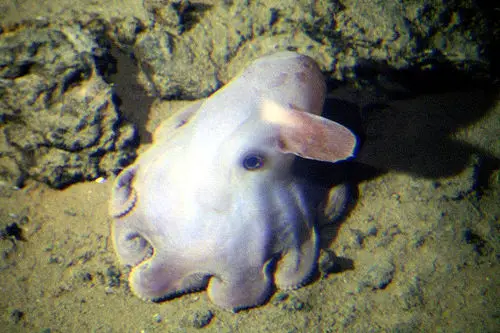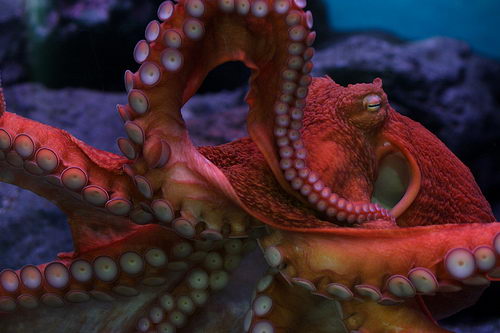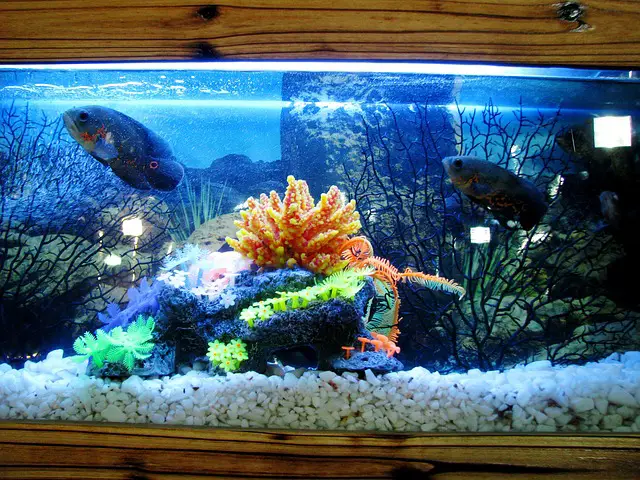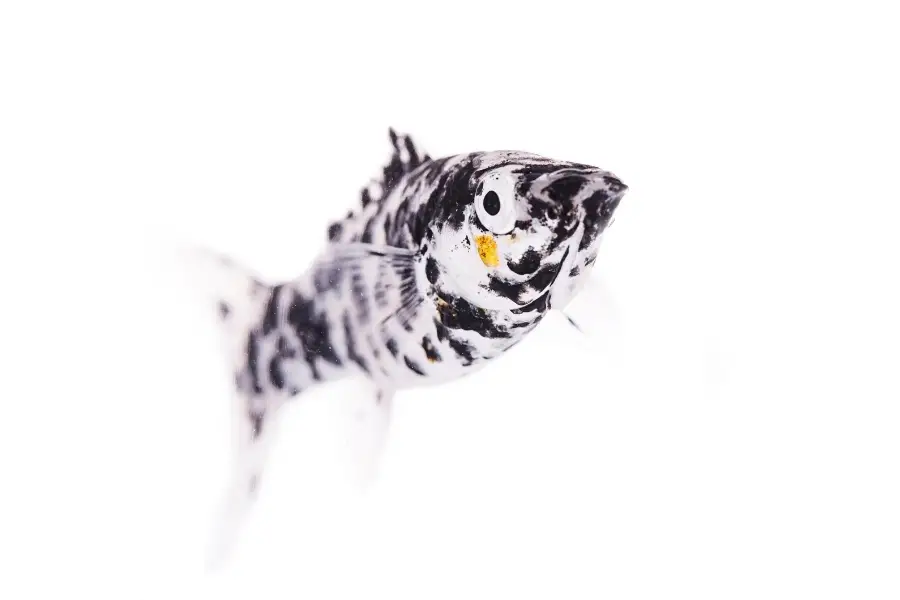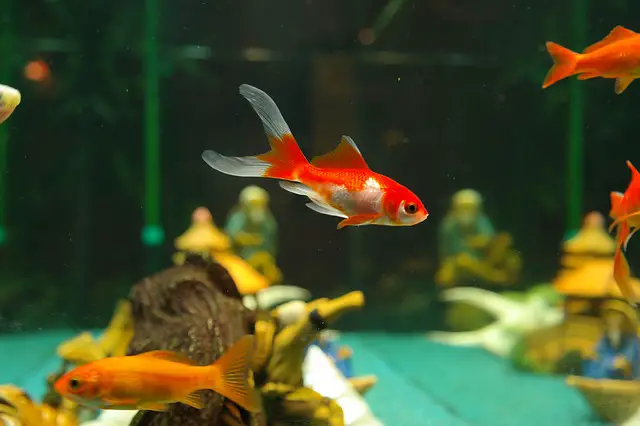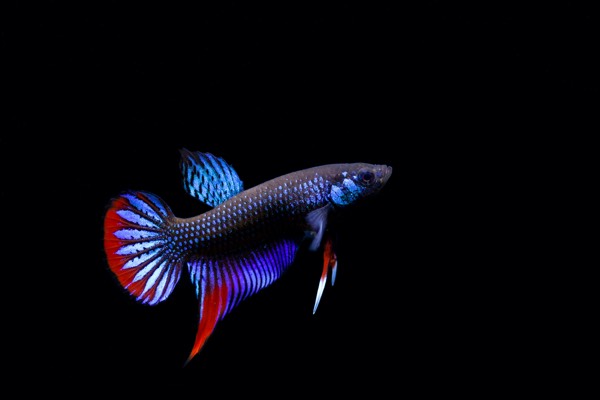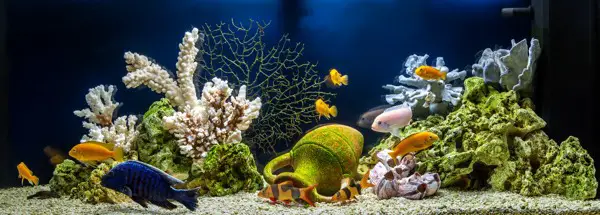Don’t forget to read all these essential blue ringed octopus facts such as blue ringed octopus diet, habitat, reproduction, and classification. Even with its small size, the blue tinged octopus is one of the deadliest creatures. The worst thing is that the victim does not feel any pain of its bite but effects are certainly speedy and sometimes fatal. The blue ringed octopuses inhabits in the rock pools surrounding Australia coast. These species take shelters in old shells and rocky holes after and before hunting. These shells provide absolute protection against potential predators such as sharks, snappers, moray eels and groper. They are more readily found in the coral reefs of Indian and Pacific oceans ranging from Japan to Australia. In Australia blue ringed octopus is found in South Australia and New South Wales. They are characterized by blue and black rings displaying on their yellowish skin. There are around 50 to 60 blue rings covering dorsal of mantle. Blue ringed octopus preys on small shrimps and hermit crabs, and may also attack humans if provoked.
Interesting Blue Ringed Octopus Facts
- Blue ringed octopus display dark brown ochre bands in its undisturbed posture. These dark brown bands run all over its arms and body with blue rings superimposed on these bands. However when disturbed, the blue ringed octopus exhibits electric blue color which can be observed when they’re taken out of water. The changing of its color and its small size makes easier for us to recognize these species. One should never pick these octopuses and it’d be rather better to leave it to the professionals.
- The blue ringed octopus will only bite when provoked or handled incorrectly. It’s poison can lead to paralysis in just about 15 minutes. Oddly enough the bite is painless which is why it often goes unnoticed. The poison has overwhelmingly immediate and fatal effects. According to a study, the toxin included in its poison is similar to that of flesh of other several poisonous fish such as puffer fish and toad. Some of the most common symptoms of bite are:
- Numbness of the mouth and tongue
- Paralysis of nausea and legs
- Blurring vision
- Difficulty in speaking
- Loss of tactile sensation
- Difficulty in swallowing
- The victim must be provided with the first aid or visit medical practitioners right after the bite otherwise paralysis will occur within few minutes or other effects such as lack of oxygen, heart failure, unconsciousness or even death.
- The blue ringed octopus measures only 12 – 20 cm (5 – 8 inches) in length with its tentacles being extended.
- The weight of these species measure around 50 grams.
- They are not aggressive animals and will only attack when provoked.
- If a blue ringed octopus loses an arm it will quickly introduce another.
- They like to build small cubbies for themselves. These cubbies are built by digging sand and sometimes octopuses make doors in these cubbies.
- Blue ringed octopus primarily lives in shallow waters on the coast of Australia. In these regions, there are number of rock pools and corals which are used for hiding.
- They have soft flexible bodies which allow them to squeeze easily in tight spaces.
- They have relatively shorter lifespan of no more than 2 years.
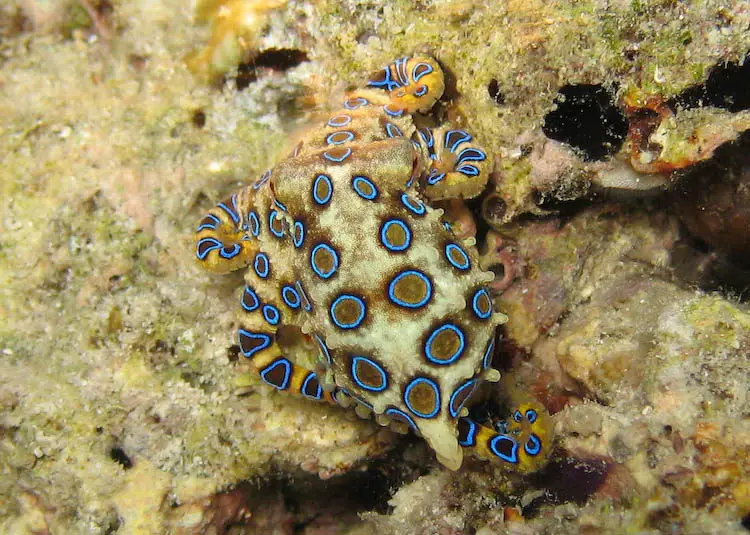
Image Courtesy of peterlevey.com
Where Do Blue Ringed Octopuses Live | Blue Ringed Octopus Facts
Blue ringed octopus inhabits all along the Indo-West Pacific Region that includes islands off eastern Papua New Guinea, Indo-Pacific, southern Japan, New Zealand, and surrounding Australia. These animals are often found in old shells of dead gastropods and rocky reefs where they come into conflict with waders and coastal fossickers.
What Do Blue Ringed Octopuses Eat | Blue Ringed Octopus Facts
Blue ringed octopus usually hunts small animals during the day. They are known to take on squid, hermit crabs, shrimps, and lobster. When a prey is in its range, it will pounce on it while clasping it with its eight tentacles and paralyzing it with its venomous bite. However, when the prey is little farther it will release its poison in the water and wait for the prey immobility.
Classification
- Greater Blue Ringed Octopus
- Blue-lined Octopus
- Southern Blue-ringed Octopus
Predators | Blue Ringed Octopus Facts
Blue ringed octopus takes shelter in rocky reefs and old shells to avoid potential predators including sharks, moray eel, and other large fish. It has the ability of changing its color with respect to its surrounding environment to get rid of predators. This makes difficult for the predators to distinguish it among rocks, sands, coral, and seaweed.
Reproduction | Blue Ringed Octopus Facts
- Blue ringed octopus lays 50 eggs in the autumn season. These eggs are carried under the eight arms for around six months. During this time, the female does not eat anything.
- The hatching period lasts for 3 to 6 months after which the female usually dies.
- The weight of blue rings measure only 100 grams with the size measuring at 20-cm in length resembling the size of a golf ball.

